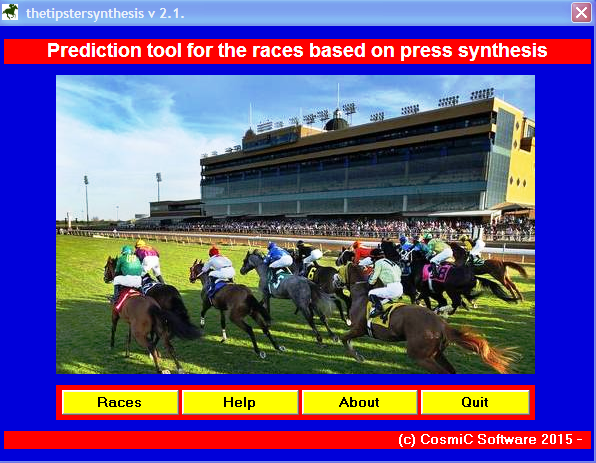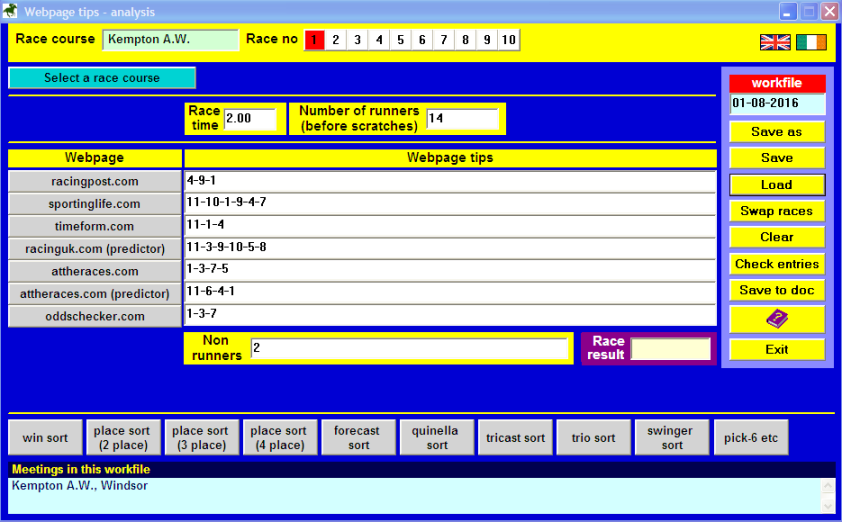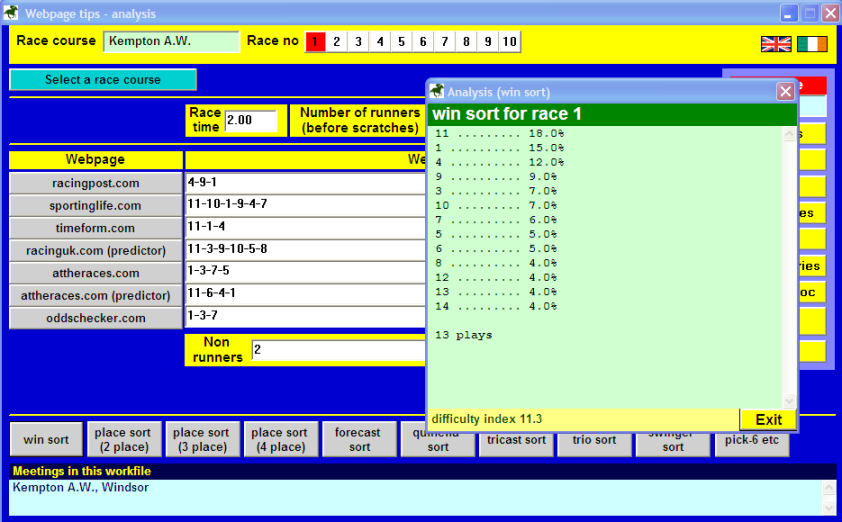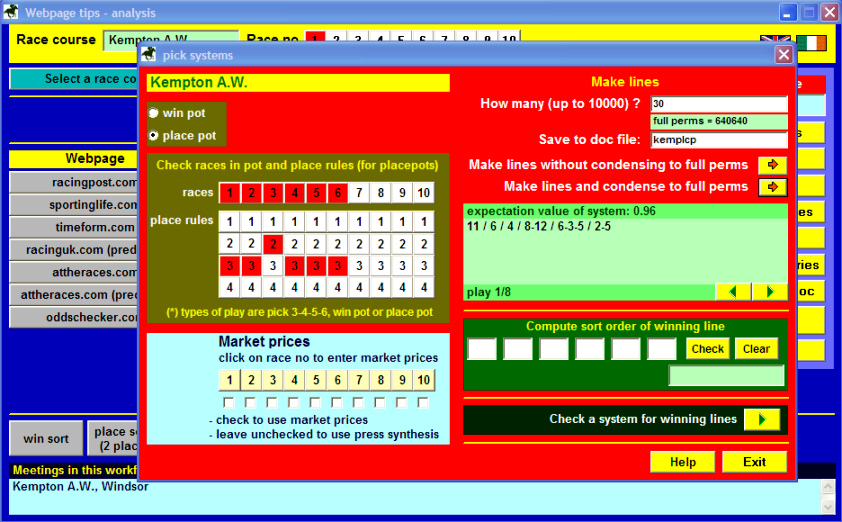cosmicway.net |
|||||||||
the punters lab |
|||||||||
thetipstersynthesis v 2.1 |
|||||||||
Tipstersynthesis v 2.1 (*) is a simple but effective piece of software for the races of the United Kingdom and Ireland. |
|||||||||
Screenshots |
|
Screenshot 1 |
|
 |
|
Screenshot 2 |
|
 |
|
Screenshot 3 |
|
 |
|
Screenshot 4 |
|
 |
|
How do I work with tipstersynthesis ? |
|
The program opens the pages you see in the screenshots. We selected the best of the free websites with daily card service and tips. We work with saddle numbers. The first selection is the one in capital letters. Example: Firast we look at the verdict which will be something like:
The first selection is the capital letters -OCOTILLO- then goes to Mr Chuckles, then to Nefetari. Usually the 2nd-3d etc chances are the horses in the order they appear in the text of the verdict. In the particular race from which this example was taken, Ocotillo was the number 2, Mr Chuckles was the number 7 and Nefetari was the number 8. So we would write 2-7-8. The program works in auto-pilot mode, meaning the user is the one who has to fill it in every time (but from the site we offer two meetings every day). |
|
About the logarithmic pool |
|
The principle behind tipstersynthesis (and other similar studies) is this:
"if we combine the tips of a team of horse racing tipsters, we produce a super-tipster who is better than the best of the team" It sounds simple to say but it's not as simple to accomplish. So could we combine the Post and the Life, to find twice as many winners as with either ? That's too excessive, but some 5% improvement is possible and if we add more sources of tips we can go higher. If you ask two friends of yours about the same race, it's possible they fancy the same horse. Why ? Have you ever given it a thought ? By asking the question did you get two opinions in such a way that one reinforces the other or no ? There is no definite answer. Maybe your two friends have read the same things in the press and they will say to you the same thing for precisely the same reasons. In that case you got one opinion, not two. Also maybe the first friend is one who knows the races and usually gives an expert opinion but the second friend is one who says random things all of the time. In such a case the first opinion is useful but the second opinion is useless. But it is also possible that the first one knows some things and the second one knows some other things and this is the case we are after. When we combine the different tips how is it possible to derive a "resultant tip" of higher certainty than all the ones taken individually ? Many people think this is impossible and only the one who is known to perform better in the company should count. But in reality this is not so. Granted there are the two extremes. The one extreme is when they both say the same things every time, so only one counts. The other is when the first one gives tips of some acceptable quality while the other always makes random guesses. The random guesser does n't count, his "importance index" is zero. But in the breadth and width of possibilities there exists an addition law that gives us the resultant. It is only through the use of statistics that this matter can be approached and to do this we need first of all some valid sources of information and in continuation we need to calibrate those sources. We have to calibrate in two ways. Each one idividually, so we know with what percentage its first chance wins, with what percentage its second chance wins and so on. Then we have to calibrate one against the other to find the addition law (we do the "conflation" of the component probability distributions" as is the mathematical term). To compute the percentages of 1st chances winning, 2nd chances winning, 3d chances winning is relatively easy, if we have kept some large enough samples. To combine the tipsters is less easy. There are two methods basically. One is the so called "linear pool" and the other is the "logarithmic pool". If you want to read more about the maths involved see here. Of the two methods, the logarithmic pool gives better results - higher final predictivity. It's a fact that the method of the "experts pool analysis " finds many applications in operations research as well as in sports predictions. |
|
printout sample (txt file) |
|